Discover the Best TV Remote Apps for Android
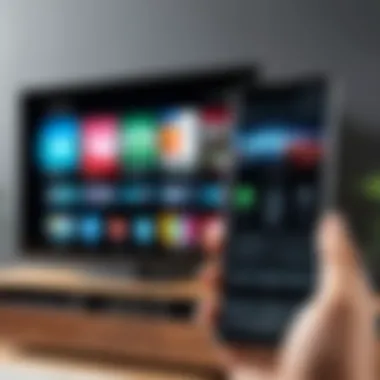
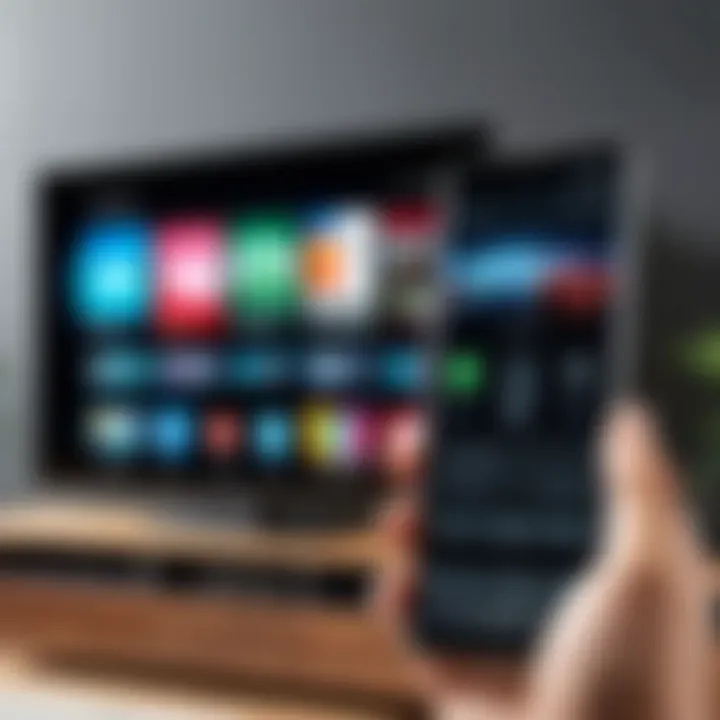
Intro
In today's tech-driven world, controlling your television has evolved beyond the traditional remote. Android TV remote apps provide users with a convenient alternative. Many of these apps enhance the functionality of your smartphone and offer users a cohesive viewing experience. This guide delves into the diverse range of TV remote applications available for Android devices, their features, and the advantages and limitations they present.
Understanding the key features of these remote apps is crucial for selecting the right one for your unique needs. Moreover, insights regarding product specifications will aid in comparing various options. Selecting the appropriate app can significantly transform how one interacts with their TV, making this exploration particularly relevant for tech enthusiasts and casual viewers alike.
Intro to TV Remote Apps
The advent of smartphone technology revolutionized how we interact with our living room entertainment systems. As televisions become smarter, so too have the applications designed to manage them. TV remote apps specifically for Android phones have gained significance. These applications serve a dual purpose: to enhance user experience and to integrate seamlessly with various devices. Understanding the realm of TV remote apps is crucial, as these tools not only simplify control over televisions but also enrich the overall viewing experience.
Purpose of TV Remote Applications
TV remote applications are designed to replace traditional physical remotes. Often, they offer more than just basic functionalities. Users can switch channels, adjust volume, and access streaming services directly from their smartphones. The convenience of having a multi-functional remote on an already ubiquitous device cannot be overstated. These apps often incorporate voice control, smart home integration, and even customization features, providing users with greater flexibility. This transformation from physical to digital control opens up new avenues for interaction with television sets and enhances user efficiency.
Overview of Android as a Platform for Remote Apps
Android serves as a robust platform for developing remote applications. Its versatility allows developers to create apps that are not only user-friendly but also highly functional. The open-source nature of Android encourages innovation, leading to a diverse array of remote apps tailored for different user needs. With millions of Android devices in use today, the potential user base is vast.
The compatibility of Android devices with various TV brands and models further underscores its significance. Many manufacturers release their own tailored remote applications in addition to general universal remote solutions. This makes it easier for consumers to find an app that suits their specific television model. As a result, using Android for remote control transcends mere convenience—it becomes a necessary component of the modern entertainment experience.
Types of TV Remote Apps Available
In the evolving landscape of consumer electronics, TV remote apps have become an essential tool for many users. As televisions grow smarter, the apps that control them are adapting as well. Understanding the various types of TV remote apps can help users make informed choices that enhance their viewing habits. There are three main categories: manufacturer-specific remote apps, universal remote control apps, and smart home integration apps. Each type serves a unique purpose and comes with its own set of functionalities.
Manufacturer-Specific Remote Apps
Manufacturer-specific remote apps are designed to work exclusively with models from a particular brand. For example, Samsung offers its SmartThings app, which works seamlessly with its smart television lineup. These apps can control all the features of the TV including volume adjustment, channel selection, and even input switching. The primary advantage of these apps is their direct compatibility with the hardware. They often provide additional functionality, such as viewing recommendations or accessing exclusive content features.
However, there are limitations to consider. These apps can only control the manufacturer's devices, which may not be suitable for someone who owns multiple brands. Also, updates to the app may depend on the manufacturer’s release schedule, potentially leading to lag in new features or bug fixes.
Universal Remote Control Apps
Universal remote control apps are the Swiss Army knives of remote technology. They are designed to manage multiple devices from various manufacturers all from a single interface. Examples include the Logitech Harmony app or the AnyMote Universal Remote. These apps typically integrate with televisions, set-top boxes, audio systems, and even streaming sticks.
One significant advantage of universal remote apps is their flexibility. Users can consolidate control of different devices into one app, reducing the clutter of multiple remotes. Additionally, these apps often include pre-programmed settings for popular devices, making initial setup straightforward.
On the downside, these apps may require more setup time to correctly sync every device. Compatibility issues can arise, especially if firmware updates occur across connected devices. Therefore, potential users should evaluate the specific devices they wish to control before committing to a universal app.
Smart Home Integration Apps
As smart home technology continues to rise in popularity, the use of smart home integration apps for TV control is on the up. These apps allow users to manage their TV alongside other smart devices in the home, such as lights, thermostats, or security cameras. Examples include Google Home and Amazon Alexa apps, which provide voice control for multiple devices simultaneously.
The primary benefit here is the potential for an interconnected smart home ecosystem. Users can set scenes, routines, and voice commands that include their TV, creating a cohesive smart home experience. For instance, saying “movie time” can dim lights, adjust the thermostat, and turn on the television.
However, there may be limitations based on compatibility with each individual device. Not all TVs may support voice commands or may require additional hardware to connect to smart home systems. Users must ensure that their chosen app aligns with the devices in their home to maximize functionality.
"Understanding the advantages and limitations of each app type can significantly improve the user experience in smart home technology."
In summary, the choice of TV remote app largely depends on user preferences, device compatibility, and specific feature requirements. By exploring manufacturer-specific options, universal solutions, and smart home integrations, users can find the optimal remote app that fits their lifestyle.
Key Features of TV Remote Apps
The key features of TV remote apps significantly influence their usability and effectiveness. In a landscape where technology is rapidly evolving, these applications must offer functionalities that enhance user experience. Understanding these core attributes is crucial for selecting the right app that meets individual needs and preferences. Here, we will explore four essential features: user interface design, connectivity options, voice control capabilities, and customization features.
User Interface Design Considerations
The user interface (UI) of a remote app plays a vital role in the ease of use and overall experience. An intuitive design can reduce the learning curve significantly. Users should be able to navigate the app without confusion. Features such as large buttons, a clear layout, and responsive touch elements enhance user satisfaction.
Considerations for UI design also include accessibility. For older devices or those with disabilities, features like adjustable font sizes and voice feedback can be beneficial. Additionally, visual themes and color contrasts can cater to personal tastes and comfort, providing an enriching experience in daily use.
Connectivity Options: Wi-Fi vs. Bluetooth
When selecting a remote app, understanding the connectivity options is pivotal. Wi-Fi and Bluetooth are the two prevalent methods, each offering distinct advantages.
- Wi-Fi allows for a broader range. It typically enables connections across various rooms or larger areas. This can be particularly useful in larger homes where signal strength and connectivity may fluctuate.
- Bluetooth, on the other hand, promises minimal latency, providing real-time control especially important for tasks that require immediate feedback. It connects directly to the device, making it less susceptible to interference from other wireless devices.
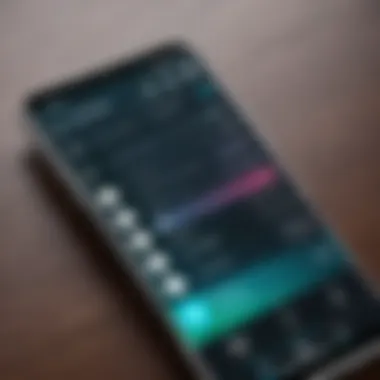
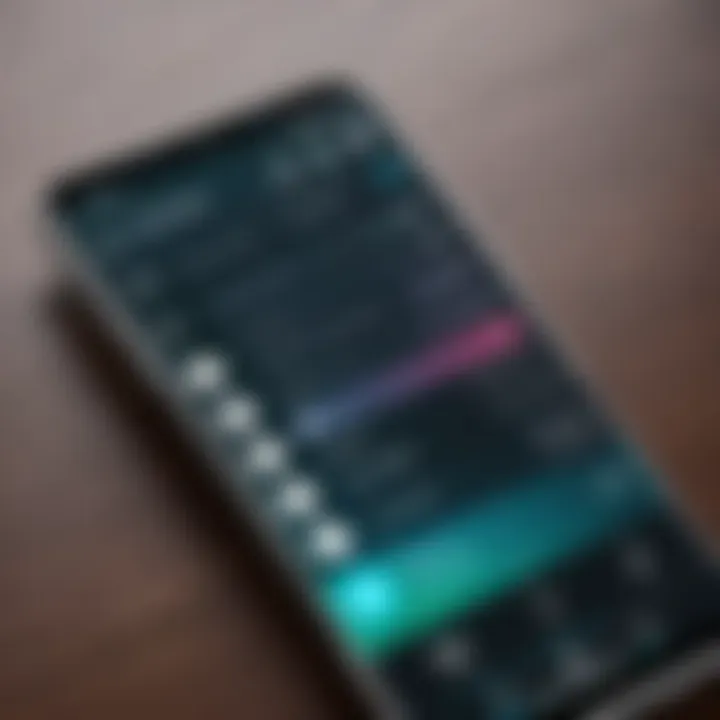
Choosing between these two involves evaluating your specific needs and the layout of your home.
Voice Control Capabilities
With advancements in technology, voice control in TV remote apps has gained significant traction. This feature allows users to manage their devices hands-free, which is both convenient and efficient. Modern remotes can often integrate with virtual assistants like Google Assistant or Amazon Alexa. Users can then use simple voice commands to change channels, adjust volume, search for content, or switch inputs.
Voice control can simplify operations, especially when multitasking. However, it’s important to note that accuracy varies. Users may encounter challenges with understanding accents or phrases, which can lead to frustration. Overall, this feature adds a layer of modernity and efficiency that enhances user interaction with their devices.
Customization and Personalization Features
In an age where personalization is paramount, remote apps that offer customization options stand out. Users should be able to adjust the layout, button functions, and themes according to their preferences. Some apps allow users to create custom remotes for frequent activities, such as binge-watching a show or gaming, streamlining the process.
Moreover, certain applications can learn from user behavior. For instance, they may suggest quick-access buttons based on the user’s frequently used inputs or preferences, thus saving time in daily interactions. This capability can significantly enhance the user experience, making remote control management more fluid and tailored.
"Customization in technology is not just a luxury; for many users, it is a necessity that enriches their interaction with devices."
Functionality of TV Remote Apps
Understanding the functionality of TV remote apps is essential for any user considering their use. These applications transform an Android phone into a versatile remote control for televisions, allowing for smoother interaction with viewing devices. The various functionalities provided by these apps not only enhance user experience but also cater to the needs of tech-savvy individuals looking for efficiency and convenience in their entertainment systems.
Basic Navigation and Control Functions
At its core, basic navigation and control are fundamental aspects of any TV remote app. Users can easily navigate through channels, adjust volume, and switch input sources with simple touches or swipes. This seamless navigation significantly reduces the reliance on physical remotes, which are often misplaced or out of batteries. For Android users, these basic functions are coupled with advanced features such as touchpad controls or gesture-based commands.
Additionally, many apps come equipped with layouts specifically designed to resemble physical remotes. This familiarity can make the transition easier for users who may be hesitant to rely on digital solutions. The efficiency and simplicity of using a smartphone enables users to integrate their viewing experiences more effectively.
Accessing Streaming Services
Today’s television experience is heavily tied to streaming platforms like Netflix, Hulu, or Amazon Prime Video. Many TV remote apps allow users to access these streaming services directly from their phones. This integration simplifies the process of starting a show or movie without having to switch between multiple remotes or interfaces.
Users can play, pause, or skip content while accessing on-screen keyboards for entering usernames or passwords. Such features can create a unified control system tailored to the digital viewing habits of modern users. This capability can significantly improve the overall viewing experience by providing quicker access to content and enhancing the ease of use.
Using Smartphone Features to Enhance Control
One of the noteworthy advantages of TV remote apps on Android devices is the ability to leverage built-in smartphone features to enhance control. These applications can utilize voice recognition through Google Assistant or other AI assistants, allowing users to issue voice commands for simpler navigation and control.
This can include searching for specific shows or channels, adjusting settings, and more without the need for constant physical interaction with the phone. Moreover, some apps enable users to share a screen from their phone directly to the TV, making it easier to display photos, videos, or presentations. This integration showcases the versatility of smartphone capabilities while reinforcing the idea that a powerful remote can reside in the phone users already carry with them.
A well-designed TV remote app can address the nuanced needs of individual users while simultaneously blending innovation with innovation in the consumer electronics space.
Benefits of Using TV Remote Apps
The significance of TV remote apps for Android cannot be overstated. In an era where technology is integral to daily life, these applications provide users with numerous benefits that enhance entertainment experiences. Not only do they simplify control of various devices, but they also offer seamless integration with other smart technology. Understanding the benefits offers insight into why they should be a part of modern consumer habits.
Convenience of Access
One of the most appreciated benefits of TV remote apps for Android is the convenience they provide. Users can control their televisions from anywhere in the room without needing to locate a physical remote. This feature proves valuable, particularly in busy households where remote controls tend to disappear. The ability to use a smartphone, which is almost always within reach, allows instant access to television controls.
Moreover, many apps enable users to program direct access to favorite channels and streaming services. Users receive a streamlined method to flip between shows without navigating complex on-screen menus. This facilitates a better viewing experience, as it saves time and reduces frustration.
"The convenience of having multiple controls within one device cannot be overemphasized; it drastically enhances user experience."
Integration with Other Devices
Integration is another critical advantage of TV remote apps. Many modern remote applications are designed to work alongside other smart home devices. For instance, the Google Home app can be used to control not only a television but also compatible lighting, thermostats, and even speakers, providing a cohesive environment for users.
This connectivity allows for routines to be created; users can customize their viewing environment. For instance, a single command can dim the lights, adjust the thermostat, and power on the television simultaneously. Such integration shows how remote apps contribute to the overall smart home ecosystem and improve user interaction with technology.
Potential for Customization
Another compelling benefit is the potential for customization available through many TV remote apps. Different users have different needs and preferences when it comes to navigating their entertainment systems. Apps can be tailored to suit these preferences, allowing users to arrange their interfaces according to personal usage habits.
Features such as customizable layouts and shortcuts to frequently used functions promote a unique experience. Additionally, several apps offer themes and color options, which can make the interface more visually appealing. This level of personalization not only enhances ease of use but also creates a more enjoyable interaction with technology.
Limitations and Challenges
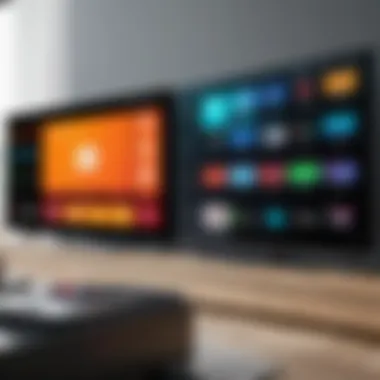

When considering the adoption of TV remote apps for Android phones, it is vital to be aware of their limitations and challenges. Understanding these potential drawbacks can empower users to make informed decisions, ensuring they choose the most suitable application for their needs. Each aspect contributes to the overall user experience and functionality of the app.
Compatibility Issues
Compatibility is a primary issue when it comes to using TV remote applications. Not all apps can control every type of television or smart device. If the app is designed for specific brands, it may not function properly with devices from other manufacturers. For instance, the Samsung SmartThings app works well with Samsung TVs but might not support devices like LG or Sony.
Before downloading, ensuring the app's compatibility with your TV model is essential. Check the app description, and paid apps might offer better compatibility guarantees compared to free options. Users often report frustration when their remote app can't connect, leaving them without immediate access to their devices.
Connection Stability Problems
Connection stability can significantly influence the usability of a TV remote app. Many of these applications rely on either Wi-Fi or Bluetooth connectivity. Wi-Fi-based apps tend to offer a wider range, but they are also prone to interference from other devices on the same network. Users might experience lag or sometimes disconnection in these scenarios.
Bluetooth connections, while stable at close range, may limit functionality beyond a certain distance, necessitating users to remain near the TV. Each connection method has advantages and disadvantages. Periodic disruptions can frustrate users and diminish the remote's perceived utility, necessitating users to evaluate their home network setup or even restart connectivity settings frequently.
Learning Curve for New Users
The learning curve is another essential consideration when assessing TV remote apps. New users might find certain interfaces unintuitive or overly complicated. Features like voice control, customization, and multi-device functionality could be overwhelming to someone not familiar with such technology.
Many apps are designed with advanced capabilities that require time to master. Therefore, patience is necessary as users familiarize themselves with their app's nuances. A steep learning curve may lead to abandonment of the app altogether in favor of traditional remote controls, which can lead to dissatisfaction with the app's potential benefits. Users should look for tutorials or user guides to assist in overcoming these initial hurdles.
Learning often requires time and practice, and navigating modern remote applications can be no different.
In summary, while TV remote apps provide substantial convenience, their limitations and challenges should not be overlooked. Users must carefully consider compatibility, connection stability, and the learning curve to not lose sight of the benefits these technologies can offer.
How to Choose the Right TV Remote App
Choosing the right TV remote app is essential for a seamless viewing experience. As the market is flooded with numerous options, finding the ideal application can be challenging. The right app not only enhances control over your TV but also integrates with your lifestyle. When selecting a remote app, consideration of specific elements, benefits, and functionalities is crucial. The following subsections will dissect these aspects to guide your decision-making process.
Assessing Compatibility with Your TV Brand
Compatibility is the first step when choosing a TV remote app. Not all apps work with every television brand. For instance, Samsung and LG have their own remote applications that cater specifically to their TVs. Before downloading an app, confirm that it is designed to work with your television’s brand and model. This is especially significant if your TV has smart capabilities, as some features might only be available through manufacturer-specific apps.
Additionally, older TV models may not be supported by the latest applications. Checking compatibility ensures that you won't face frustrating limitations or connectivity challenges.
Evaluating Required Features
Different remote apps come with a variety of features. Evaluate what functionalities are essential for your use. For instance:
- Do you need voice control?
- Are you interested in integrating with smart home devices like Google Assistant or Amazon Alexa?
- How important is access to streaming services from the remote app itself?
Take time to list down the features that matter most. This could include a user-friendly interface, easy navigation, and options for personalizing controls. An app that lacks essential features may not meet your expectations, leading to dissatisfaction in the long run.
Reading User Reviews and Ratings
User feedback is one of the most informative resources when choosing an app. Look for reviews on platforms like Reddit or app stores. Insights from other users can reveal potential issues with performance, stability, and updates. Ratings can give a quick overview of an app’s quality. For instance, an app with a high rating and positive reviews can indicate reliability, while frequent complaints suggest you might want to steer clear.
When reading reviews, consider both the number of reviews and the average rating. A well-rated app with a significant number of reviews can be more trustworthy than one with a high rating but only a few users.
Ultimately, your chosen app should align well with your specific TV model and personal preferences, making your viewing experience more enjoyable.
In summary, selecting a TV remote app is not merely about downloading any application. It requires careful evaluation of compatibility, features, and user feedback. This thorough approach will yield a remote app that precisely fits your needs.
Top TV Remote Apps for Android
The significance of selecting the appropriate TV remote app for Android cannot be understated. As the contemporary home viewing experience evolves, these apps serve not just as electronic replacements for physical remotes but fundamentally enhance user interaction with smart TVs and connected devices. A well-chosen app can streamline control in various environments, from home to office settings, providing a more seamless integration of technology into daily life. Moreover, it enables customization that caters to individual user preferences, maximizing utility.
A Review of Manufacturer-Specific Options
Manufacturer-specific remote apps are designed by TV companies specifically for their own devices. For instance, Samsung offers the "SmartThings" app, which integrates a range of functions for smart TVs. Users can change settings, access apps, and control volume, all through a single platform. LG’s "LG Smart World" app also provides similar functionalities, aiming to create a cohesive experience with their television models. These apps are tailored to the capabilities and features of their respective devices, ensuring optimal performance and ease of use.
When using manufacturer-specific apps, users often find advantages such as
- Direct access to unique features not found in universal apps.
- Better compatibility and synchronization with the TV’s firmware.
- App updates that coincide with television software updates, ensuring continued functionality.
Comparison of Universal Remote Apps
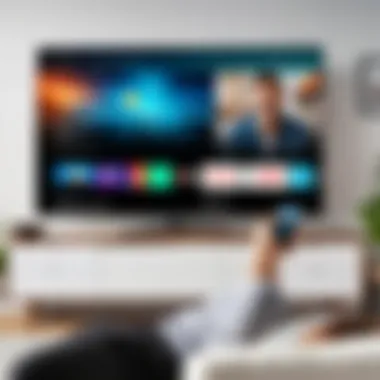

Universal remote apps are designed to control multiple devices, making them a versatile choice for users with various brands and types of electronics. Notable names in this category include "Unified Remote" and "Android TV Remote Control." These apps offer the convenience of managing different devices from a single platform, which reduces clutter and simplifies control.
However, the effectiveness of universal remote apps can vary. Users should take note of:
- Compatibility with the variety of devices and brands they own.
- The ease of setup and user interface. A straightforward interface can significantly reduce the time and effort needed to establish connections.
- The availability of features that match individual needs, such as voice control, macros, or shortcuts.
Innovative Smart Home Integrators
As smart technology becomes standard in homes, the roles of TV remote apps are shifting to integrate seamlessly with smart home systems. Applications like "Google Home" and "Amazon Alexa" function not only as TV remotes but also as central hubs to control various smart devices, from lighting to thermostats.
This evolution is beneficial in several ways:
- It enhances the user experience by enabling voice commands for multiple functions, thus improving accessibility.
- It delivers a cohesive ecosystem where various devices can interact and respond in unison, making home automation more intuitive.
- It opens new avenues for customization, as users can design routines that address their unique living environments—like dimming lights and turning on the TV for movie night.
User Experiences and Use Cases
User experiences with TV remote apps for Android are essential for understanding their practical value. These applications simplify interaction with televisions and streamline the viewing experience. By examining specific usage cases, we can identify where these applications shine and where limitations might exist, helping users make informed decisions.
Everyday Usage Scenarios
In daily life, the convenience of TV remote apps translates directly into user satisfaction. For instance, a common scenario involves controlling a TV from a distance. Rather than reaching for a physical remote, people can easily adjust the volume or switch channels using their phones. This flexibility can be particularly beneficial during social events, where finding a remote might be inconvenient.
Another scenario involves accessing streaming services. For instance, when watching shows on platforms like Netflix or Hulu, users can search for titles efficiently. Instead of using cumbersome on-screen keyboards with the TV remote, typing on the phone is much quicker and more intuitive. Moreover, seamless integration with smart home devices, like Google Home or Amazon Echo, can enhance the experience further, allowing for voice commands to control the TV and other connected devices.
Additionally, it is worth noting that some users employ remote apps to troubleshoot issues. If a television is acting up, users might check their app, adjusting settings remotely to quickly fix problems. This kind of reachability is key to making user experiences more streamlined and hassle-free.
Troubleshooting Common Issues
Challenges can arise with any technology, and TV remote apps are no exception. A common issue users face is connectivity problems. For instance, Wi-Fi instability can hinder the app’s functionality, making it difficult to connect or maintain a stable connection with the TV. Users who are experiencing such issues often need to check their network settings and may have to restart either the app or the TV to resolve the problem.
Another issue involves compatibility. Some remote applications may not support all TV brands. Users discovering that their phones are not effectively controlling their TVs often need to review the app's specifications and possibly choose a different application that suits their device.
"Assessing compatibility with the TV brand when selecting a remote app is crucial to avoid frustrations."
Lastly, the learning curve can deter new users. While many apps are designed to be user-friendly, some still require time to master their full capabilities. Providing guides or customer support within the app can aid users in overcoming these initial obstacles. Informative tutorials can greatly enhance the onboarding process for new users, making them more comfortable with using the app.
In summary, user experiences and common use cases highlight the practicality of TV remote apps. They provide modern solutions for everyday viewing habits while presenting manageable challenges that users can generally overcome with knowledge and practice. Understanding these elements is pivotal for anyone considering the use of a TV remote app on Android.
Future Trends in Remote Control Technology
The landscape of remote control technology is rapidly evolving, particularly in the realm of TV remote apps for Android devices. This section delves into emerging trends that are reshaping how users interact with their televisions and home entertainment systems. Understanding these developments is critical for anyone looking to optimize their viewing experience and harness the full potential of modern technology. As these trends unfold, they promise to enhance not only user convenience but also the overall functionality and integration of devices within the smart home ecosystem.
Emerging Technologies and Innovations
Recent advancements in technology have led to transformative concepts in remote control applications. Significant innovations include enhanced voice recognition, artificial intelligence, and machine learning algorithms that personalize user experience.
- Voice Control: The incorporation of sophisticated voice command systems enables users to navigate content hands-free. Apps like Google Home and Amazon Alexa have made interacting with TVs as simple as speaking a command.
- Gesture Control: Some emerging applications leverage camera sensors on smartphones to detect hand gestures. This allows users to control their TVs or streaming devices without the need for physical buttons, promoting a more immersive experience.
- Smart Integration: Innovations in cross-device compatibility mean that TV remote apps can now interface seamlessly with other smart home devices. For instance, controlling lighting and sound with a single application enhances the feeling of technological interconnectedness.
These technologies not only improve accessibility but also cater to the growing demand for more intuitive and engaging usage of smart devices.
Potential Impact on User Experience
The impact of these emerging technologies on user experience cannot be overstated. As technology advances, so too do expectations of performance and convenience in TV remote apps. Users increasingly favor applications that deliver seamless control and integration across various devices.
- Increased Accessibility: Innovations like voice and gesture controls create more inclusive experiences. This can be particularly beneficial for users with disabilities or those who prefer more user-friendly navigation.
- Personalized Content Suggestions: AI-driven solutions can analyze user preferences and viewing habits, suggesting content that matches individual tastes. This ensures that every user receives a tailored viewing experience, reducing the time spent searching for shows.
- Enhanced Security: With the rise of smart home technology, concerns about user data and device security are prevalent. Future trends may focus on improving the security measures of remote apps to protect user privacy while offering a smooth operational interface.
The evolution of remote control technology underscores a broader trend towards smarter and more user-friendly home entertainment systems, enhancing convenience and enriching overall viewing experiences.
As these developments continue, they redefine how we think about entertainment control, making future remote applications even more central to the user experience.
Culmination
The conclusion section plays a critical role in encapsulating the entire discussion presented in the article. It serves as a final opportunity to emphasize the importance of TV remote applications for Android phones. In a world where technology continually evolves, these apps offer a convenient and versatile means to enhance the viewing experience. They bridge the gap between simplicity and advanced functionality, allowing users more control over their entertainment systems than ever before.
Summary of Key Points
In summarizing the key points, it becomes evident that:
- TV remote apps provide convenience and ease of use, eliminating the need for multiple physical remotes.
- Various types of remote apps exist, including manufacturer-specific options, universal remote controls, and smart home integration apps.
- Core features, such as user interface design, connectivity options, and voice control capabilities, are essential for optimal user experience.
- Despite some challenges, like compatibility issues and learning curves, these applications can significantly enhance how users interact with their TVs and other devices.
Final Thoughts on TV Remote Apps for Android
As technology advances, the functionality of TV remote apps will likely become even more integrated with smart home ecosystems. For tech-savvy individuals, these apps will remain a critical tool for managing their media consumption and device interactions. The adaptability and increasing sophistication of TV remote applications mean they will play a crucial role in how we consume media in the near future. Selecting the right app can greatly improve day-to-day operations, tailoring the experience to individual preferences. Overall, TV remote apps for Android represent a significant step forward in user convenience and engagement.



